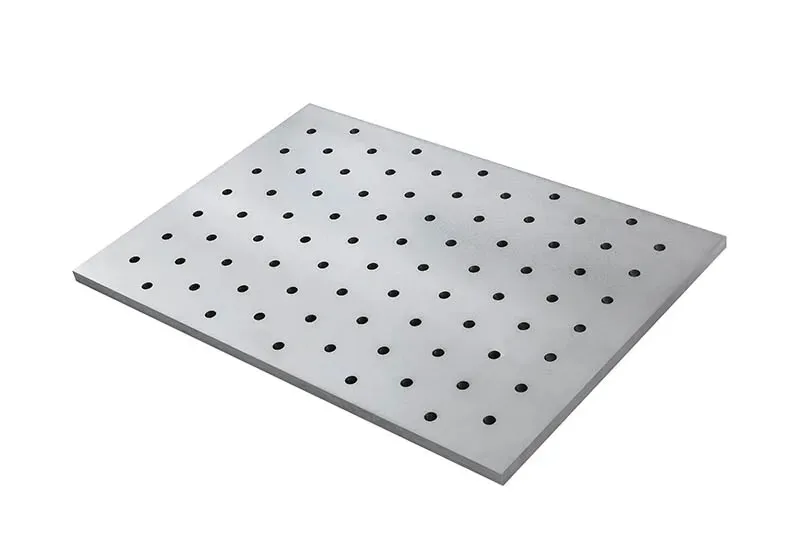Tungsten is a refractory metal known for its exceptionally high melting point (3422C), mechanical strength, and excellent thermal conductivity. The thermal conductivity of a tungsten plate measures its ability to conduct heat efficiently, making it ideal for applications requiring high-temperature stability and rapid heat dissipation.

The thermal conductivity of tungsten plate can vary depending on its purity, density, and temperature. Generally, at room temperature (20°C), the thermal conductivity of pure tungsten is approximately 173 W/(m·K).
Here’s a typical thermal conductivity vs. temperature table for pure tungsten:
|
Temperature (°C) |
Thermal Conductivity(W/m·K) |
| 25 | 173 |
| 100 | 160 |
| 200 | 150 |
| 400 | 140 |
| 600 | 130 |
| 800 | 120 |
| 1000 | 110 |
| 1500 | 95 |
| 2000 | 80 |
| 2500 | 65 |
| 3000 | 50 |
Material Purity: Impurities in a material can scatter phonons (quantized lattice vibrations) and electrons, which are the primary carriers of thermal energy in metals. This scattering reduces the mean free path of these carriers, thus decreasing thermal conductivity. Higher purity generally leads to higher thermal conductivity.
Temperature:
Metals: For most metals, thermal conductivity tends to decrease as temperature increases above room temperature. This is because electron-phonon scattering becomes more frequent at higher temperatures. However, at very low temperatures, thermal conductivity can increase due to reduced scattering.
Non-metals/Insulators: For non-metallic solids, thermal conductivity often increases with temperature at lower ranges (due to an increase in phonon population) but then decreases at higher temperatures due to increased phonon-phonon scattering.
Crystalline Structure and Grain Size:
Crystalline vs. Amorphous: Crystalline materials generally have higher thermal conductivity than amorphous materials because the ordered lattice provides a more efficient path for phonon propagation.
Grain Boundaries: Grain boundaries act as scattering sites for phonons and electrons. Therefore, materials with smaller grain sizes (more grain boundaries) generally have lower thermal conductivity than those with larger grain sizes.
Density/Porosity:
Materials with higher density typically have higher thermal conductivity.
Porosity (the presence of voids or air pockets) significantly reduces thermal conductivity because air is a poor conductor of heat. The more porous a material, the lower its thermal conductivity.
Alloying: When different elements are alloyed together, the introduction of foreign atoms disrupts the perfect lattice structure, leading to increased scattering of phonons and electrons. This typically decreases the thermal conductivity compared to the pure constituent metals.
Phase: The phase of a material (solid, liquid, gas) dramatically affects its thermal conductivity. Solids generally have the highest thermal conductivity, followed by liquids, and then gases (which are typically very poor conductors).
Isotropy/Anisotropy: Some materials exhibit anisotropic thermal conductivity, meaning their thermal conductivity varies depending on the direction of heat flow. This is common in materials with layered or highly oriented crystal structures (e.g., graphite, some composite materials). Tungsten, being cubic, is generally isotropic.

Tungsten plates are excellent heat conductors at room temperature, but their thermal conductivity decreases with temperature and is influenced by purity,microstructure, and mechanical condition.
Share this page
If you have any product needs or questions, please leave us a message for consultation.
TEL: 86-18623759992
jason@bettmetal.com
Innovating Materials
for a Brighter Future